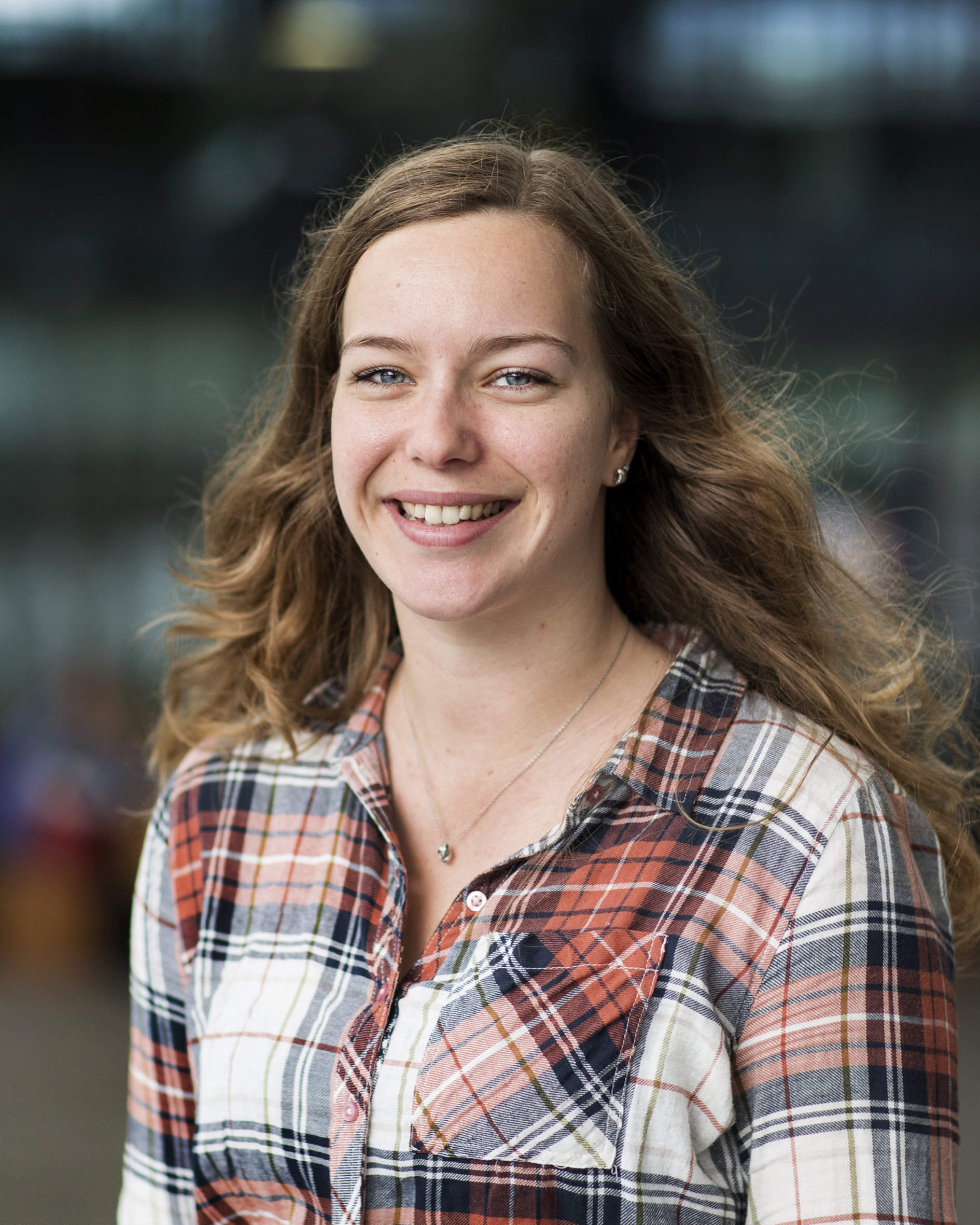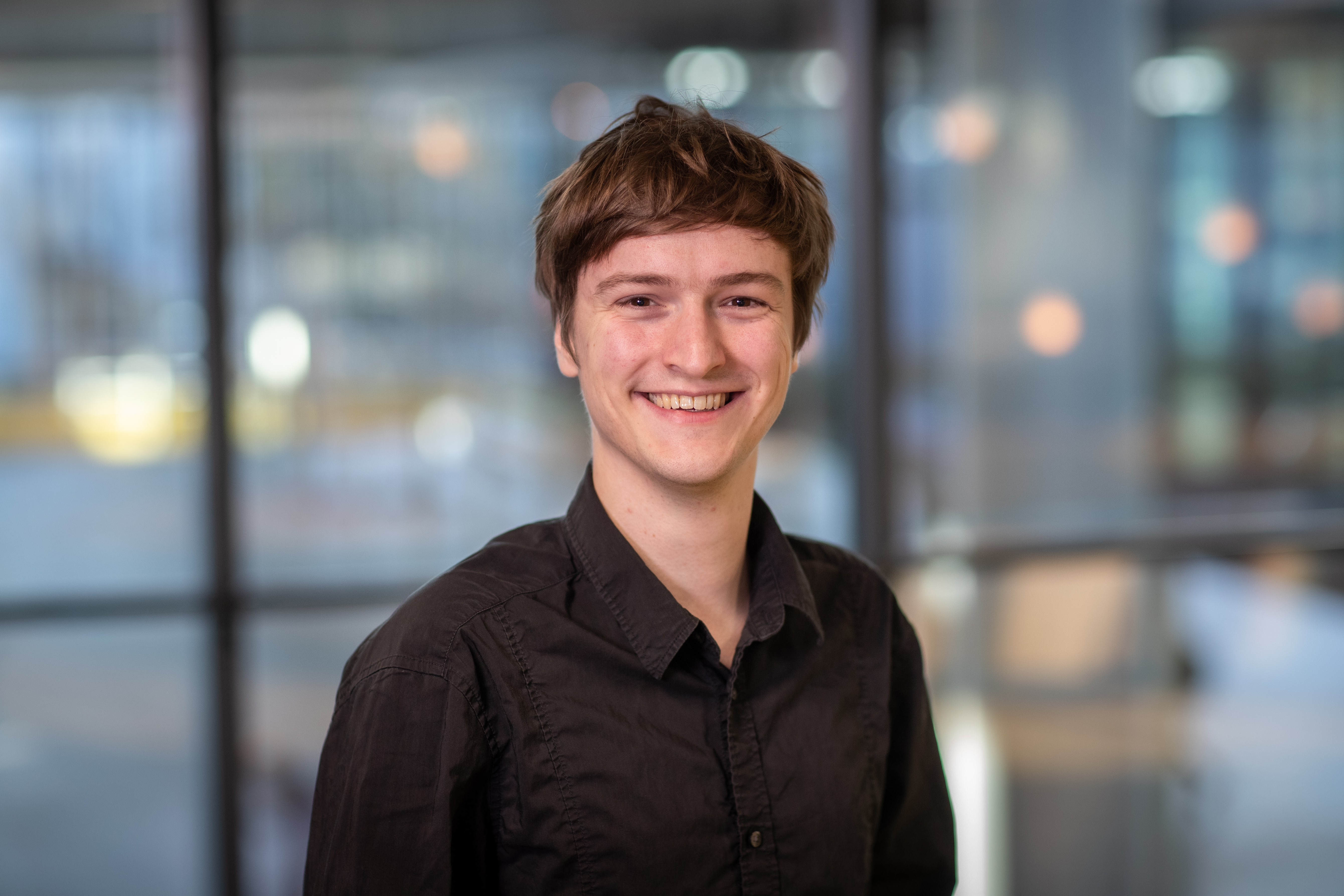Research highlight
Integrating polymers to push photonics
Within the Eindhoven Hendrik Casimir Institute, researchers are working on a variety of adaptable optical materials for communication and computation applications. Topics under study range from steerable lenses for Li-Fi communication to hardware for neuromorphic computing.
Light-steering liquid crystals
‘Essentially, this is the idea,’ says Vincent van der Doef, while showing a system that consists of a small plano-convex lens suspended by four perpendicular elastomer strings attached to a static frame. The PhD researcher’s work at the Electro-Optical Communication group is part of the large-scale BROWSE project, which develops light-based methods to deliver in-door wireless communication solutions.
‘The advantage of this so-called Li-Fi technology is that it has a low power consumption and a huge available bandwidth, and as such, can act as an alternative to current radio waves-based Wi-Fi solutions,’ he says. The envisioned system will consist of glass fibers that transport information to a collimator at the ceiling of some crowded space like a shared office, an airplane, or a library. ‘I work on the final end of this technology: bringing the light from a ceiling-mounted source to the individual user. The challenge is to accurately direct a beam of light towards the device of a user in an adaptable way, to prevent users from losing their internet connection when they move their laptop, or if anything gets in between the light source and their wireless device.’

"We acknowledge that the transition towards quantum secure networks has to be a gradual one"
Idelfonso Tafur Monroy | Founding father of this testbed

"These materials might also be interesting candidates to deliver the beam steering, by mounting an adaptable polymer lens on liquid crystal elastomers. By locally heating the elastomers they will deform, thus changing the shape and position of the lens.”
Vincent van der Doef | PhD Candidate
The solution Van der Doef is developing is inspired by a recent article by Spanish researcher López-Valdeolivas, who suggested using heat-sensitive liquid crystal elastomers to change the focal point of a lens. ‘My supervisors Oded Raz from Electrical Engineering and Danqing Liu from Chemical Engineering & Chemistry immediately thought that these materials might also be interesting candidates to deliver the beam steering, by mounting an adaptable polymer lens on liquid crystal elastomers. By locally heating the elastomers they will deform, thus changing the shape and position of the lens. And that is where my PhD project comes in.’
Van der Doef started by modeling the expected behavior of such a system. He demonstrated that, in principle, good lens actuation should be possible. However, it turned out to be extremely difficult to distinguish the heat-dependent behavior of the lens itself from that of the guiding material. That is why now, he is first experimenting with an elastomer suspension setup to show that the temperature-controlled deformation of the guiding material is both large and controllable enough. The next step will be to fabricate the setup and compare the results with the model, which is another challenge in itself.
Neuromorphic computing
Also in the project of Rajib Ratan Ghosh, the Electrical Engineering department and the Chemical Engineering department have joined forces to explore a potentially innovative technology. In an EHCI-funded collaboration between Danqing Liu from the Human Interactive Materials group and Weiming Yao from the Photonic Integration group, Ghosh is building neural networks on integrated photonics platforms by combining indium phosphide photonic devices with liquid crystal polymers that can be used for low-power switching.
By changing the molecular orientation of the liquid crystals, for example, by applying a voltage, the refractive index in the photonic devices can be tuned. This allows for phase modulation of different optical modes as they propagate through the devices.
Currently, Ghosh mainly focuses on the fabrication side of the project, he explains. ‘I started by designing a neuromorphic device and the associated learning algorithms to execute a specific task, which in our case is image classification. In the coming months, I will fabricate the photonic chip in TU/e’s NanoLab and build this system by integrating the liquid crystals from the Chemical Engineering department with the indium phosphide platform that is developed here at Electrical Engineering.’
"Photonics is now mainly used to solve the problem of information exchange between data centers. But I am convinced it can be used for so much more. With this project, I want to demonstrate the possibilities photonics offers for high speed, energy efficient computation as well."
Rajib Ghosh | PostDoc

For the Photonic Integration group, it is a first to be working with liquid crystals, thus the fabrication process will be far from easy, Ghosh expects. ‘We still need to figure out the basics, like how to integrate the liquid crystals onto our chip without deteriorating either performance, how to connect electrodes to the liquid crystals, and how to read out the computed signals.’ The fact that other groups have combined these materials before, albeit for other purposes, strengthens his idea that it should be feasible. ‘But heterogeneous integration always remains challenging.’
Though photonics-based solutions are starting to find their way to the market, especially when it comes to applications in sensing and communication, photonics-based computation is still in its infancy. Ghosh hopes this can be changed. ‘Photonics is now mainly used to solve the problem of information exchange between data centers. But I am convinced it can be used for so much more. With this project, I want to demonstrate the possibilities photonics offers for high-speed, energy-efficient computation as well.’
Harnessing ultrafast heat
Integrating polymers to push photonics
Fiber-based sensor sees single nanoparticles